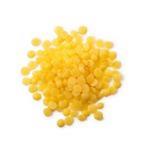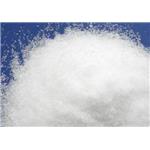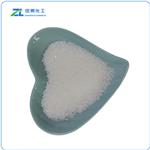Amorphous silica, the noncrystalline form of SiO2, is a transparent to gray, odorless, amorphous powder
white to off-white powder
Silica gels are dispersions of colloidal silica obtained by a sol–gel process. The process consists in precipitating colloidal silica from an aqueous solution of sodium silicate by adding
hydrochloric or sulfuric acid. The colloidal precipitate or gel consists mainly of hydrated
silica (SiO2
.nH2
O). After filtration the precipitated silica is washed in order to remove residual salts and stabilized by adding ammonia or sodium hydroxide. The stabilized gel is then
dried and later calcined to obtain an activated material, usually in the form of small beads.
Silica gel was used on glass plates for preparative TLC and on aluminium sheets for analytical TLC. Silica gel was used in vacuum chromatography and TLC. Silica gel was used in column chromatography.
Silica gel was used to compare MCM-41 type mesoporous adsorbents.
Silica Gel, 40-63 Micron Particles (cas# 112926-00-8) is a compound useful in organic synthesis.
A gel made by coagulating
sodium silicate sol. The gel is dried by heatheating
and used as a catalyst support and as a
drying agent. The silica gel used in desiccators
and in packaging to remove moisture
is often colored with a cobalt salt to indicate
whether it is still active (blue=dry;
pink=moist).
A rigid gel made by coagulatinga sol of sodium silicate andheating to drive off water. It is usedas a support for catalysts and also asa drying agent because it readily absorbsmoisture from the air. The gelitself is colourless but, when used indesiccators, etc., a blue cobalt salt isadded. As moisture is taken up, thesalt turns pink, indicating that thegel needs to be regenerated (by heating).
Silica gel is a rigid 3D network of colloidal silica. It is exclusively used as a support material for the active titanium(III) centers in Ziegler-Natta catalysts. Silica gel allows a controlled fragmentation lresulting in the formation of uniform polymer particles with narrow particle size distribution and high bulk density. Silica gel is classified as below:
a. Aquagel - pores are filled with water
b. Xerogel - by the process of evaporation, aqueous phase in the pores are removed
c. Aerogel - solvent removed by supercritical extraction
A hard granular hygroscopic form of hydrated silica is
called silica gel. It is made by heating a coagulated sol of
sodium silicate. It is used as a catalyst and a desiccant.
Amorphous fumed silica is used as a mineral, natural or synthetic fiber. A potential danger to those involved in the production and handling of fumed silica for paint pigments or catalysts. Diatomaceous earth is used in clarifying liquids, in manufacture of fire brick and heat insulators; used as a filtering agent; as a filler in construction materials; pesticides, paints, and varnishes. A potential danger to those involved in mining of diatomaceous earth or fabrication of products there from.
Before use as a drying agent, silica gel is heated in an oven, then cooled in a desiccator. Conditions in the literature range from heating at 110o for 15hours to 250o for 2-3hours. Silica gel has been purified by washing with hot acid (in one case successively with aqua regia, conc HNO3, then conc HCl; in another case it was digested overnight with hot conc H2SO4), followed by exhaustive washing with distilled water (one week in a Soxhlet apparatus has also been used), and prolonged oven drying. Alternatively, silica gel has been extracted with acetone until all soluble material was removed, then dried in a current of air, washed with distilled water and oven dried. Silica gel has also been washed successively with water, M HCl, water, and acetone, then activated at 110o for 15hours. Silicon monoxide [10097 -28 -6] M 44.1, m > 1700o, d 4 2.18. Purify the monoxide by sublimation in a porcelain tube in a furnace at 1250o (4hours) in a high vacuum (10-4mm) in a stream of N2. It is obtained as brownish black scales. [Schenk in Handbook of Preparative Inorganic Chemistry (Ed. Brauer) Academic Press Vol I p 696 1963.]
Silica, amorphous is a noncombustible solid. Generally unreactive chemically. Incompatible with fluorine, oxygen difluoride, chlorine trifluoride. Soluble in molten alkalis and reacts with most metallic oxides at high temperature.
The initial threshold screening level (ITSL) for Silica gel is 60 μg/m3 based on an 8-hour averaging time.


